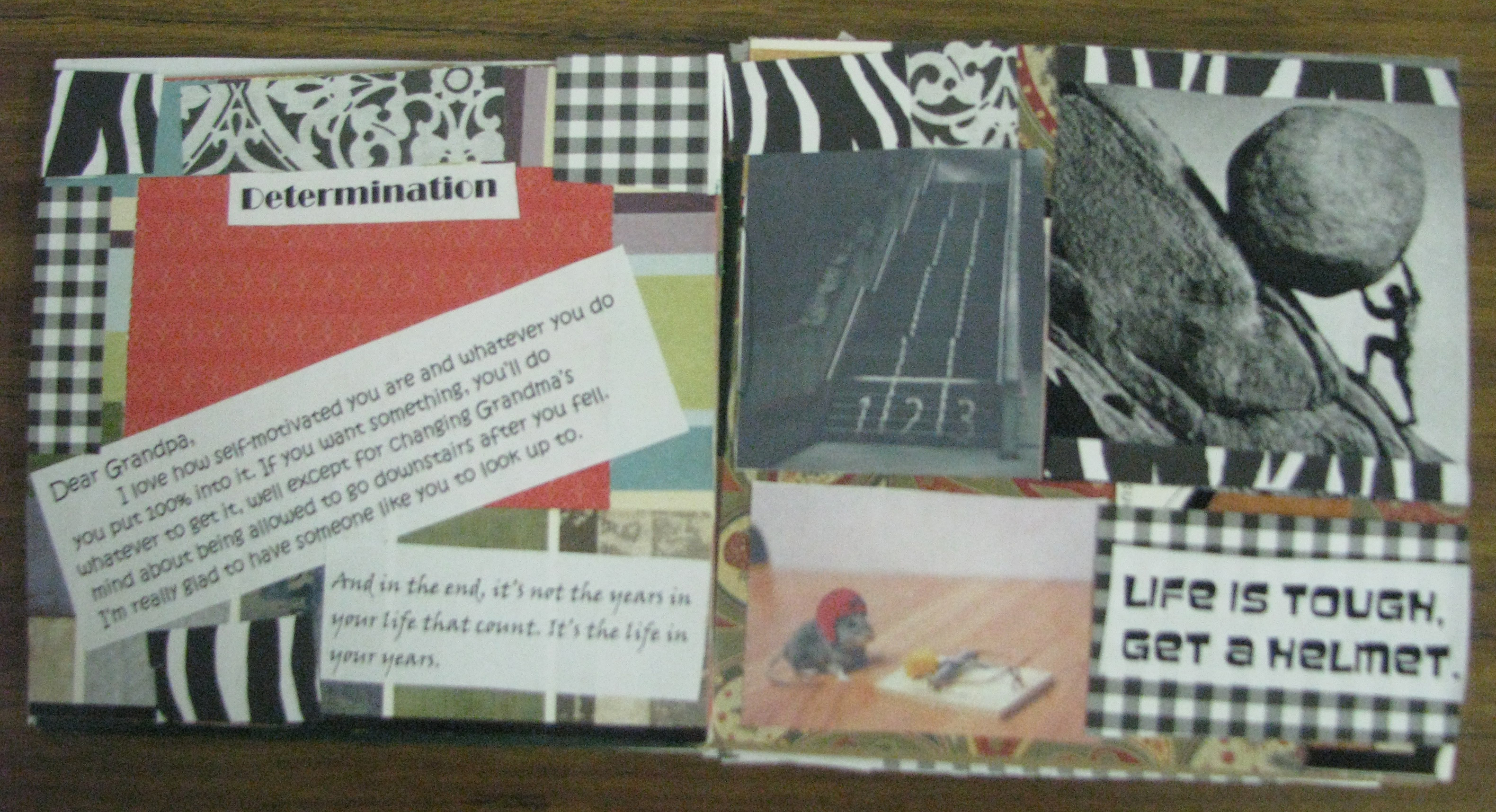I like to switch things up every once in a while, so I assigned my high school students a project I’d never done before—a gift book. In addition to the academic value, I hoped to strengthen at least one teen-adult connection at a time when it’s sometimes hard to just grunt, “Good morning,” without an argument. (I know this because I have two teens in my own house.) I also wanted students to be able to create a keepsake to give a loved one during the holiday season. Many students could not afford to buy anything. In our rural school, many students come from low-income homes.

Students had to create a book for an adult. They begged to make the book for a friend. They said they couldn’t think of any adults to receive the gift.
“What about your parents?” Head shakes.
“Your grandparents?” Negative.
“Aunts? Uncles?” Nope.
“Youth workers? Teachers? People from your past?” Now they were being cantankerous. I knew there had to be one adult they admired or appreciated enough to cut out some pictures and do some writing. Their reaction still surprised me.
A couple of them asked if they could make one for me. My heart swelled but I hid it and said “no.” I suspected that if I forced the issue, they would think of someone and the book might strengthen or maybe even help heal a relationship.
I gave each student four paper lunch sacks and used them for the seven pages. We folded and stapled them. I provided the colorful backgrounds, glue sticks, scissors and art supplies. We went to the computer lab where students could print graphics, quotes and other writing. I asked students to think about the recipient and personalize it through the graphics, quotes and writing.
About 98 percent of them—a great return—made their book.
This might sound like an immature project for high school, until you look at the decisions students had to make. They chose a recipient, considered the traits of this person, chose quotes and graphics and wrote personal messages for each page. They put it all together in about a week.
Our project had an added benefit. I had recently heard complaints from several faculty members about a student’s behavior in their classes. They said he had cheated. He disrupted class. He wouldn’t even try. He was arrogant. I didn’t hear any positive comments. In my class, I noticed he was a little bit of a handful but nothing unusual. He created a book for a grandparent who is ill. He explained that they had not gotten along for the last few years but now he wanted to honor this person with this book. This cowboy-boot wearing boy, who can run a farm on his own, cut and pasted and glued and created one of the best books in the entire grade. He really thought through how to design it and made a keepsake. I’m sure there will be some tears when it’s opened during the holidays. I’m glad that he felt comfortable in my class to make the book. I don’t ever want to close a door on a student and deem them “impossible.”
Teens love the adults in their life but don’t show it. I think these books will be a lifeline for some—a reconnection, a realization of what matters. I forced the issue, making the assignment worth 100 points. I made it all right to do something positive for an adult in their life. We even wrapped them in colorful papers. I hope they follow through and give the gifts. Sometimes, lessons aren’t just about the standards and objectives. Sometimes lessons should be about life and about those human connections that are so important and so hard to recognize in daily life.
Blevins is a high school English and journalism teacher in Missouri.